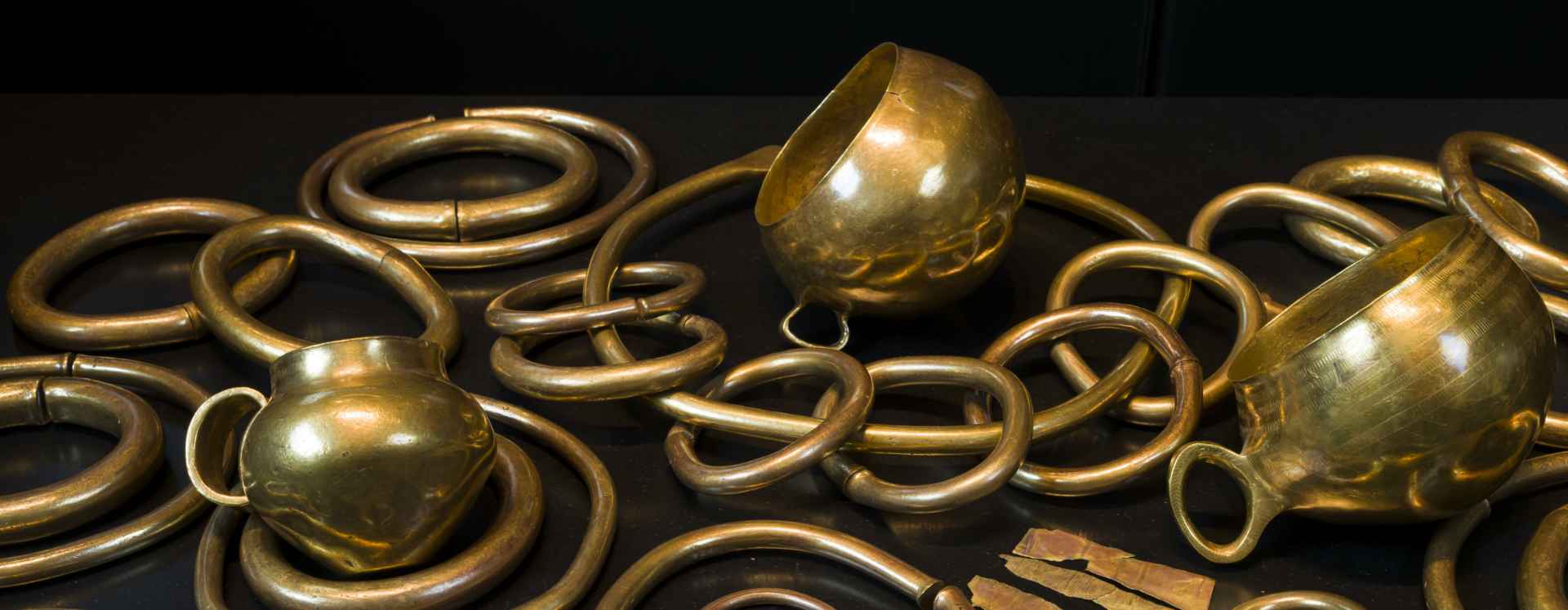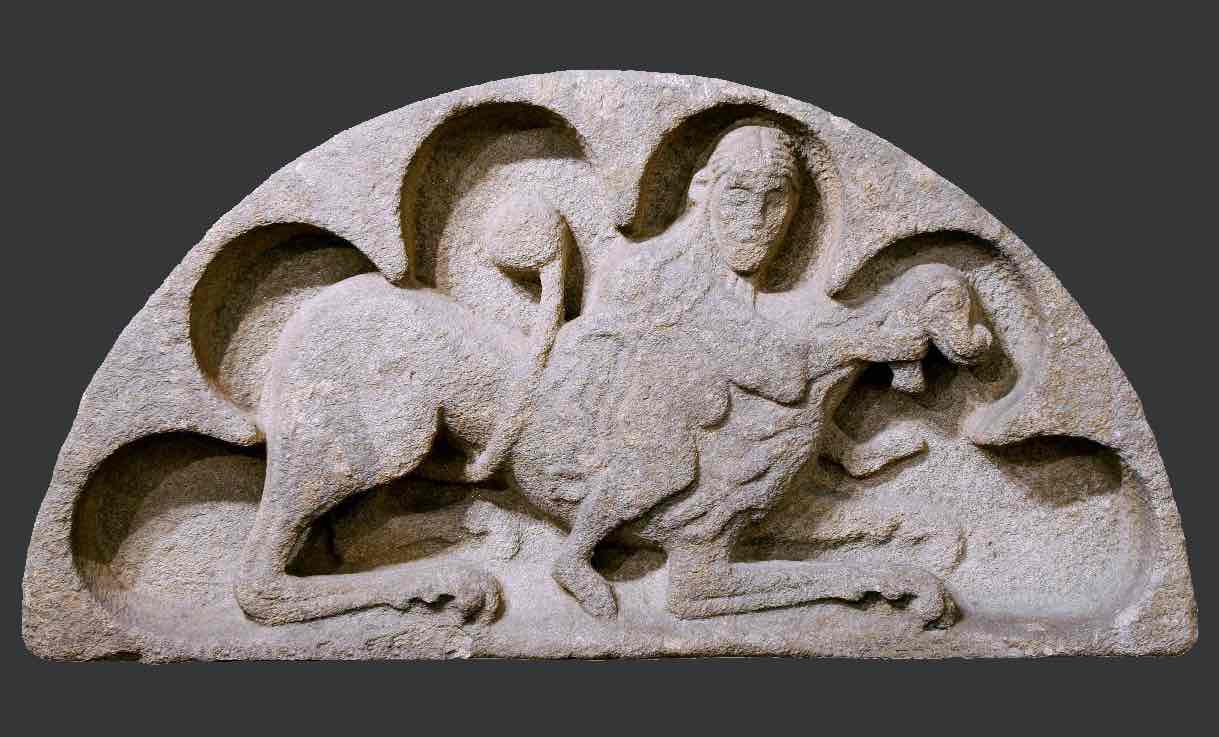SAN XOÁN DE PALMOU TYMPANUM
The Palmou tympanum is an emblematic piece in the recovery of despoiled Galician heritage.
Made between 1150 and 1160, it is the first and most elaborate of a series of seven tympanums with the same scene that can still be seen today in seven Romanesque churches located in the centre of Galicia, spread throughout the four provinces. As in them, the curved part shows a series of semi-circular arches, similar to those that can be seen in different parts of the cathedral of Santiago. They frame a scene from the Old Testament in which Samson is wrestling with a lion.
Although the carving is not of great quality, it shows some interesting features, such as the representation of volumes, the adaptation to the frame or the more detailed execution of some parts.
Until the 18th century it formed part of the primitive western façade of the Romanesque church of San Xoán de Palmou (Lalín-Pontevedra), which was then remodelled. Around 1930 it was discovered by members of the Seminar of Galician Studies and photographed as being integrated into the façade of a traditional house.
Shortly afterwards, this piece disappeared and was not found again until many years later, when it was sold in a gallery in Milan (Italy). It was there that the Museum finally managed to acquire it.
Label
More information
In addition to the tympanum of San Xoán de Palmou, the Museum has three other medieval tympanums from the churches of San Martiño (Moaña), San Francisco (Pontevedra), and the disappeared church of Santa María (Vigo). All of them were recovered in their day by the former Archaeological Society of Pontevedra.



